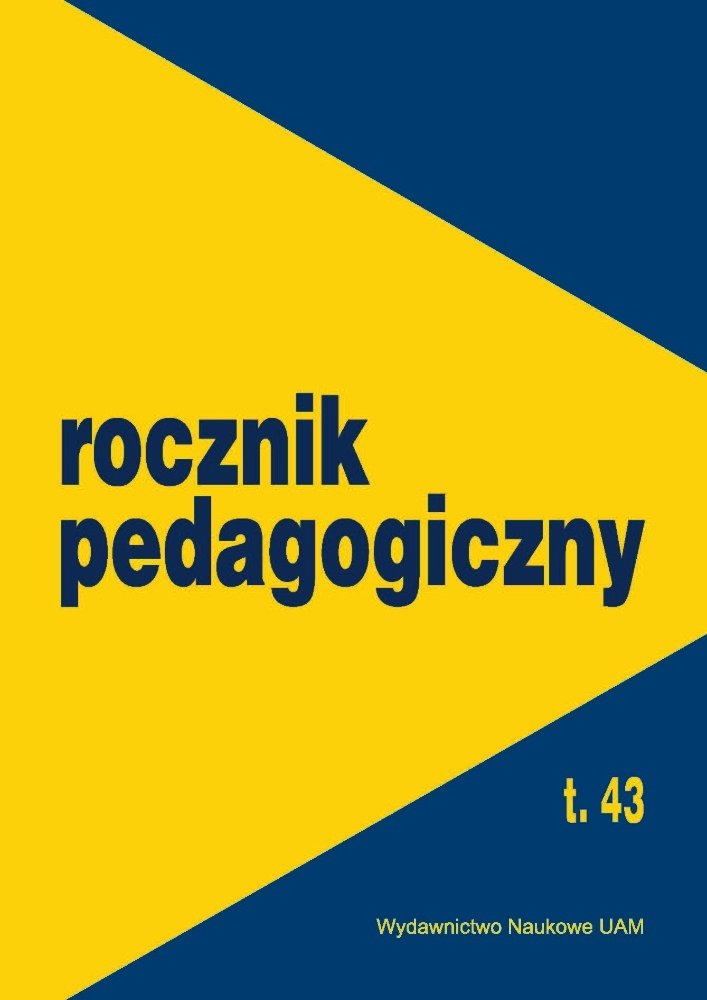Abstrakt
The concept of the language as an instrument for children, that leads to their mutual understand- ing in the classes 1–3, depends on the comprehensive educators approach to the relations between linguistics and the philosophy of language, developmental psychology, sociology of culture, and the history of the Polish society. The child’s undertaking of the school education imposes on the teacher the obligation to accompany it not only in mastering the elementary knowledge of the native language’s grammar system, but also in creating situations that overcome students fear of making difficult decisions when solving interesting tasks. When using the functions of the language: fatic, communicative, informational, expressive or meta-linguistic, pupils go through the several stages from the incorrect speech to correct speech, and they master the elementary structure of the reading texts intended for the little recipients. The described process would be strengthened depending on the pupil’s social background, and conditioned culturally and environmentally. This in turn affects the perception of the poetic language function and aesthetic attitude towards art.
Bibliografia
Bralczyk J., Mówi się. Porady językowe profesora Bralczyka, Wydawnictwo Naukowe PWN, Warszawa 2020.
Dorren G., Babel: w dwadzieścia języków dookoła świata, przeł. A. Sak, Wydawnictwo Karakter,
Kraków 2019.
Gadamer H.-G., Wahrheit und Methode, J.C.B. Mohr (Paul Siebeck), Tübingen 1960.
Grynberg H., Żydowska wojna, Czytelnik, Warszawa 1965.
Hirsch E.D., The Aims of Interpretation, The University of Chicago Press, Chicago 1976.
Kurcz I., Psychologia języka i komunikacji, Wydawnictwo Naukowe Scholar, Warszawa 2000. Liptáková L’., Klimovič M., Stimulating Pupils Executive Functions Through Processes of Text
Comprehension, „O dieťati, jazyku, literatúre: časopis pre otázky rozvíjania komunikačnej a li-
terárnej kompetencie” [On Child, Language and Literature] 2015, č. 2, s. 9–27.
Nałkowska Z., Medaliony, Czytelnik, Warszawa 1946.
Nowak T., Dwunastu, Wydawnictwo Literackie, Kraków 1974.
Porayski-Pomsta J., O rozwoju mowy dziecka, dwa studia, Dom Wydawniczy i Handlowy Elipsa,
Warszawa 2015.
Poslední P., Jiný Conrad: Eseje o literární kultuře, Univerzita Pardubice, Pardubice 2016.
Pratt M.L., Toward a Speech Act Theory of Literaty Discourse, Bloomington, London 1977.
Propp V., Morfologiâ volšebnoj skazki, Labirint, Moskva 2005.
Puzynina J., Język wartości, Wydawnictwo Naukowe PWN, Warszawa 1992.
Ricoeur P., La conflit des interprétations. Essais d’herméneutique, Points, Paris 1969. Smuszkiewicz A., Literatura dla dzieci. Podręcznik dla studentów kierunków pedagogicznych, Wydawnictwo Naukowe UAM, Poznań 2015.
Solter A., Bez trestů a odměn. Výchova spokojeného dítěte ve věku 2–8 let, Stanislav Juhaňák – Tri-
ton, Praha 2019.
Wittgenstein L., Philosophische Untersuchungen, Frankfurt am Main 1953.
Wojdowski B., Chleb rzucony umarłym, Państwowy Instytut Wydawniczy, Warszawa 1971.
Licencja
Prawa autorskie (c) 1970 Małgorzata Kowalczyk, Petr Poslední

Utwór dostępny jest na licencji Creative Commons Uznanie autorstwa – Użycie niekomercyjne – Bez utworów zależnych 4.0 Międzynarodowe.

